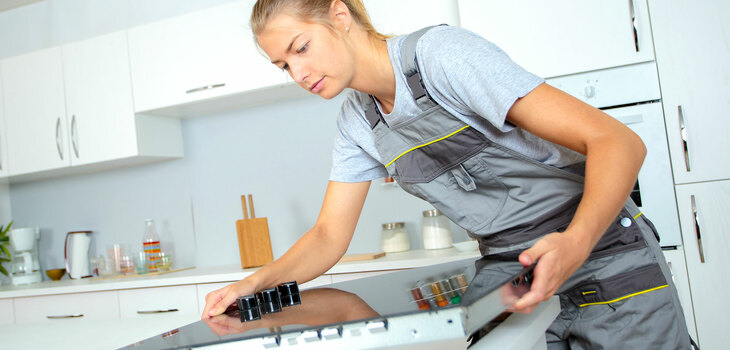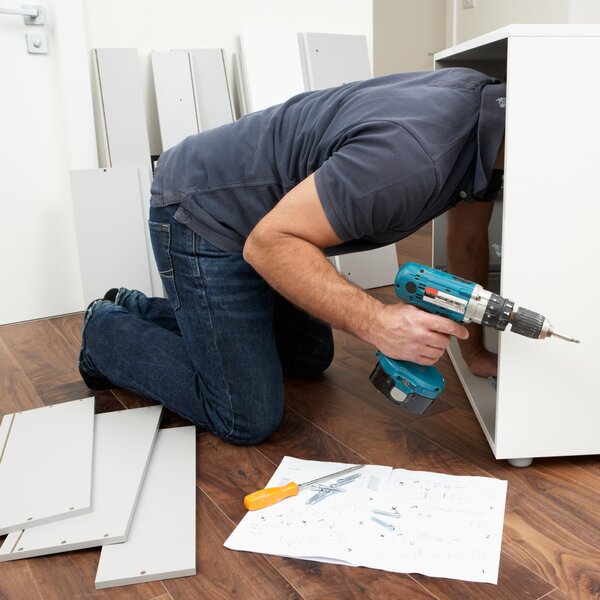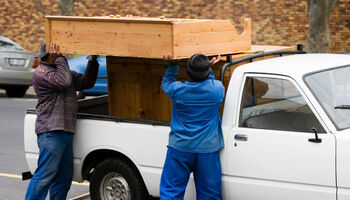Navigating the Maze: Essential Tips for Smooth Kitchen Disassembly

Taking apart a kitchen, whether you're moving or wanting a new look, might be discouraging at first. But, with a clear plan, helpful advice, and a bit of patience, it becomes a possible and enjoyable task.
To ensure a smooth process, it's important to have the right tools for the job, organize components and screws as you go, and possibly enlist the help of experienced hands when necessary.
This guide will help you through your kitchen disassembly, breaking down the process into detailed, easy-to-follow steps to make the experience smooth and efficient.
When you're ready to start disassembling your kitchen, it's important to approach the task with a clear strategy. Here are some essential tips to make your kitchen disassembly process as smooth as possible:
Prepare Your Tools
Having the right tools at your disposal is an essential tip to make any job easier. Start by putting together a basic toolkit. This should include Phillips and flathead screwdrivers, wrenches in several sizes, and a sturdy hammer.
Depending on the specifics of your kitchen disassembly project, you might need more than just these essentials. Pliers, for example, are great for gripping and pulling, especially when you're dealing with tough parts. A utility knife is handy for cutting sealant, tape, or opening boxes. When you have a lot of screws to remove, using a drill or an electric screwdriver can be a real-time-saver and reduce the amount of effort required.
You might also need special tools like a pry bar for taking out countertops or a putty knife for scraping off residues and adhesives. Having all these tools ready before you start will help you tackle any challenges that come up, making the disassembly process smoother and more efficient.
Clear your Kitchen space
Clearing your kitchen goes beyond just emptying cabinets of food and dishes. It involves creating an uncluttered space so you can easily access work areas. Removing items makes it easier to dismantle what's needed and offers an opportunity to declutter and discard unnecessary items.
As you clear out your storage, think about what you need and can give away. Doing this helps you deal with fewer things during the renovation, making packing and unpacking easier. By clearing out the space, you avoid breaking things and make it safer for everyone, reducing the likelihood of accidents and injuries.

Label Everything
When taking apart your kitchen, it's smart to label everything. This way, you won't get mixed up when it's time to put it all back together. It helps keep track of all the pieces, ensuring everything goes back where it belongs so your kitchen works just right. Simply use tape and a pen to tag each part.
For the small stuff like screws, use bags or boxes and write on them so you know what they're for. For example, if you are working on the drawer hinges, you can stick a note on it with the tag "Drawer Hinges" and put the screws for it safely in a labeled bag. This approach makes Reassembling easier and is useful for Kitchens with many detailed parts.
Take Photos of the Kitchen before disassembling
Before you unscrew the first hinge or drawer, take broad photos of your kitchen from multiple angles. These images will serve as a visual guide and a point of reference when it's time to put everything back together.
Capture the overall kitchen layout and specific details such as cabinet fittings, handle placements, and shelf organization. This can be incredibly helpful when dealing with complex assemblies or when trying to recall the specific orientation of parts.
As you progress with the disassembly, continue to take photos at each stage. These images can capture positions that might be forgotten over time, such as the routing of pipes under the sink or the wiring of appliances.
These images can be useful for correcting reassembling issues or consulting with professionals about modifications or repairs and can be valuable throughout the renovation process.
Key strategies for easy Kitchen Disassembly
To make kitchen disassembly even easier, follow these strategies.
Start by removing appliances and make sure to turn off electricity and gas for safety Then, disconnect water pipes and remove the taps to easily take off the countertops without causing damage.
After that, move on to the plumbing by removing the upper cabinets first. This prevents the risk of these cabinets falling onto the lower ones or causing injuries while you work.

Next, focus on removing the doors and drawers and organize them to make reassembly simpler later on. This allows for a better assessment of any damage or repairs needed. Finally, remove the lower cabinets and any other items like shelves or racks to clear the space.
By breaking the kitchen into sections, from the big appliances to the small pipes, you make sure each part is handled properly. This sets you up nicely for the exciting task of building your new kitchen.
Tips and Tricks for smoothly taking apart your Kitchen
Applying smooth disassembly techniques can make the process easy, and one important tip is to keep a detailed record of everything in your kitchen. This helps you remember where each item belongs when it's time to put everything back together. You should Always use the right tool for the task at hand. For example, a power drill can remove screws faster than a manual screwdriver making the process quicker and more efficient.
Another important tip is to ask for help when needed. Some kitchen components, like heavy countertops or large cabinet units, require more than one person to remove safely and efficiently. Don't hesitate to call on friends or family to assist with these parts of the disassembly. Working with them makes the job easier and more fun.
Finally, during reassembly, patience is key. Rushing through the process can lead to mistakes or damage so Take your time to ensure everything fits perfectly, consulting your notes, labels, and photos to guide you.
Conclusion
Disassembling a kitchen doesn't have to be a complicated process. Wit h the right preparation, tools, and techniques, it can be a straightforward task. However, if the project seems overwhelming, seeking professional help is always a wise decision. Moovick offers expert kitchen assembly services, ensuring your kitchen is disassembled and reassembled with the utmost care and efficiency.







